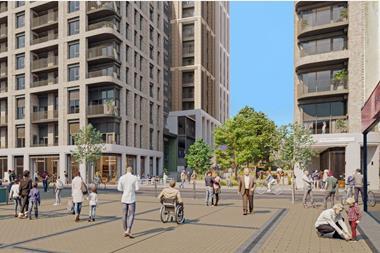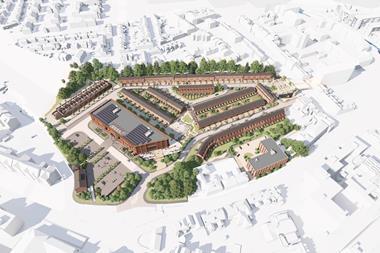For many years, the appeal of owning a property in one of the world’s cultural and financial hotspots, coupled with the potential for substantial capital appreciation, has attracted investors from all over the world to the prime Central London (PCL) property market.
Historically thought of as the City of London, Westminster, Kensington and Chelsea, and some parts of Hammersmith, Fulham and Chelsea, the postcodes that dominate the PCL investment landscape have long been considered as some of the most desirable in the UK among high-net-worth investors (HNWI).

Underscoring this sentiment, research by Butterfield last year showed that 54% of people would choose a property in the City of London, Kensington and Chelsea or Westminster if money were no object.
However, fuelled by generational shifts, ambitious redevelopment projects, and perpetually high demand for properties in the upper echelons of London’s property market, central boroughs that have not traditionally been regarded as part of the PCL market have enjoyed increasing levels of demand in recent years.
For example, neighbourhoods like Shoreditch, Notting Hill and Camden have experienced a significant amount of regeneration in the last couple of decades and are proving extremely popular among HNWIs – particularly the younger generation.
Recognised for their diverse range of cafes, restaurants and boutique shops, these areas also boast a unique blend of historic and modern architecture. A noticeable trend has emerged, with a growing number of buyers looking away from the conventional heartlands of the PCL market and embracing the distinctive charm that defines these areas instead.
Consequently, properties in these neighbourhoods have enjoyed substantial capital appreciation. In the decade to July 2023, house prices in Notting Hill, for example, increased 101%. In 2023 alone, prices have surged by over 11%, elevating the average property price in W11 from £2m to nearly £2.3m.
This is significant, as prices in the rest of the capital have fallen by 0.8% this year. Such overperformance is not confined to the London property market either, with KFH data indicating that prices in Shoreditch have experienced a much shallower dip in value , at -1.6%, than the rest of the UK, at -13.4%.
With this data in mind, increasing demand in these areas may be insulating values against the worst of the current economic climate and could provide welcome returns as prices in the wider market remain pressured in the months to come.
This is supported by the forecasts for the PCL rental sector, which has enjoyed a significant boost. For example, recent Knight Frank data shows annual rental value growth of 11.2% for the PCL market in September.
Notably, this surge is anticipated to continue in areas that lie beyond the confines of the traditional PCL zone. A case in point is Camden, where rental growth is projected to reach an impressive 17.6% by 2026.
Therefore, on top of the obvious potential for capital appreciation, as these areas grow in desirability and demand, investors with an eye on the possibility of elevated rental yields in the years to come could also be encouraged to buy.
However, the PCL market is a unique sector of the property investment landscape. Therefore, investors and their brokers require in-depth knowledge and expertise from lenders when navigating it.
A significant aspect of this expertise lies in the ability to accurately assess the value of PCL properties. The distinctive and customised features of luxury properties in PCL postcodes limit the possibilities for direct comparisons. Thus, valuations tend to fluctuate based on the assessor, underscoring the importance of borrowers connecting with lenders who can deliver accurate valuations of their current and prospective investment properties.
Moreover, HNWIs frequently have intricate financial situations, such as the absence of a conventional credit history or fluctuating income sources. Meanwhile, non-UK borrowers also face difficulties when seeking finance from high-street banks. Both groups are prevalent among PCL borrowers, so lenders must commit to providing flexibility through a bespoke range of products and terms.
By offering tailored solutions that acknowledge a buyer’s financial situation and align with their distinct needs, lenders can allow a wider range of borrowers and investors to access the wealth of opportunities that could emerge in less traditional, but increasingly popular, areas of the PCL market.
Alpa Bhakta is chief executive of Butterfield Mortgages





























No comments yet